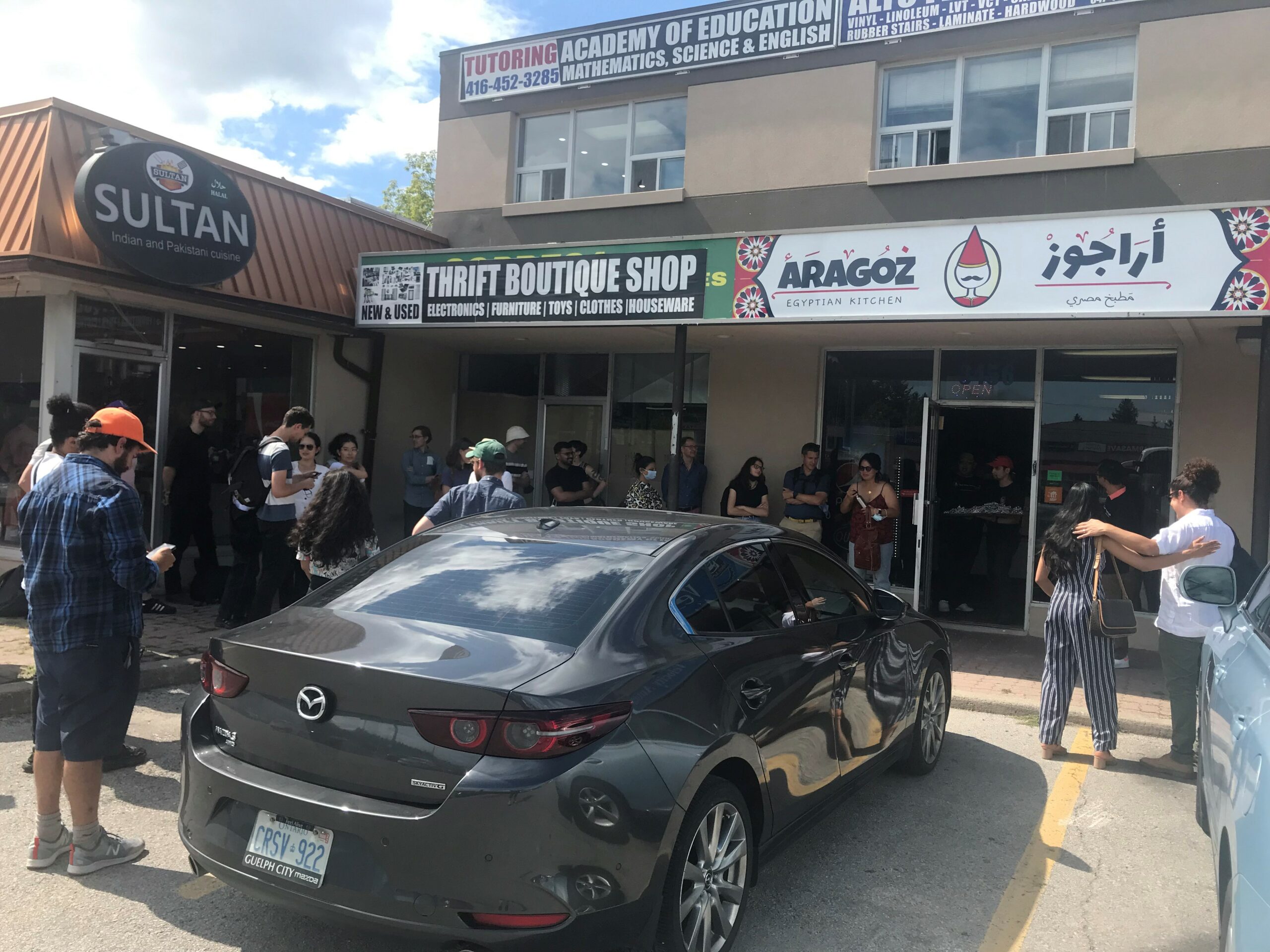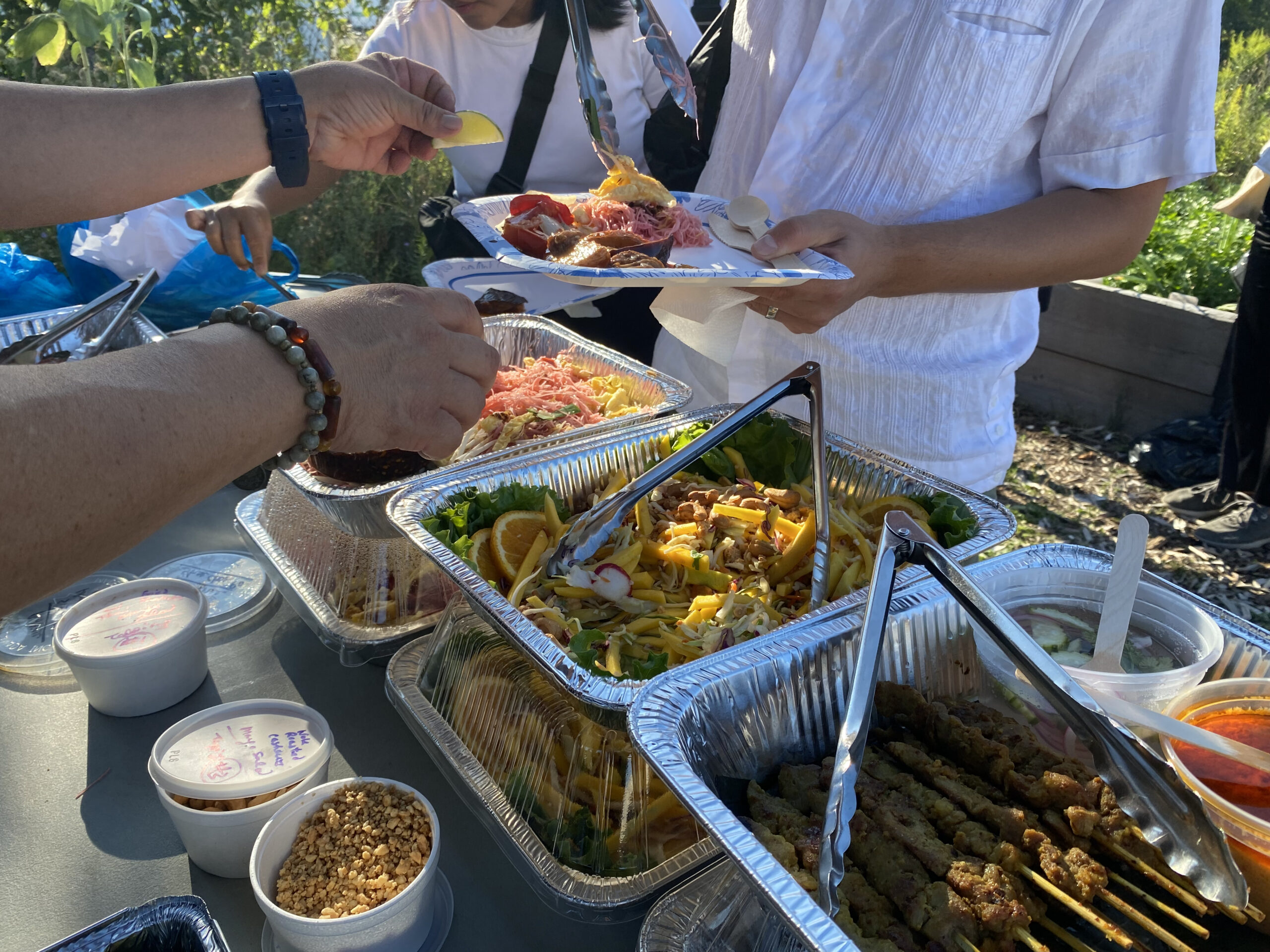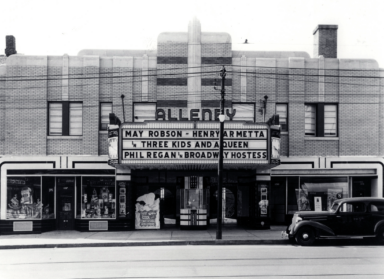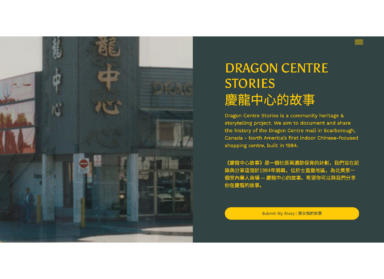Scarborough has long been a landing place for newcomers to Toronto. People from all over the world come to this sprawling borough to get a foothold and find community in a new megacity — often far from home in every sense of the word.
One of the ways people find that foothold and community is through food: it’s a way to establish yourself, make some money, carry on the traditions you brought with you to Canada, and establish yourself in a neighbourhood.
This is what the ERA team saw during a culinary tour of some of the incredibly diverse cuisine Scarborough has to offer. Howard Tam, Founder and Foodie-in-Chief of Eat More Scarborough Food Tours, led the group on a guided bus tour of four local spots, representing four unique cultures, while introducing everyone to the food entrepreneurs, who were able to tell the story of their business, personal history, and their passion for their amazing food.

The tour kicked off at the Feed Scarborough food bank, with everyone enjoying the famous “Warden Station Patty.” Anyone familiar with that subway stop will recognize the smell of hot, flaky pastries wafting through the station from Bakery on the Go, next to the bus terminal. Then everyone piled onto the bus.
After winding through the maze of the various strip malls Scarborough is famous for, we arrived at the first stop: Aragoz Egyptian (3456 Kingston Road). Owner Adam Solomon treated us to traditional falafel sandwiches, taking time to point out what made his falafel quintessentially Egyptian, as opposed to other cultures who make the dish.

Next, we rode down Kingston Road’s “motel row,” where the many roadside hotels that used to serve travellers are now boarded up, or serving as temporary housing. We arrived at Sisaket Thai (1466 Kingston Road), where we had Gabong (shredded and deep fried squash and zucchini cakes), crispy shrimp chips, and Thai iced tea, in a style specific to northeast Thailand’s Sisaket Province.
It’s worth noting both Aragoz and Sisaket opened during the pandemic: a leap of faith, considering the pressure it caused on existing businesses.
“I would say that’s hope, but also probably people seeking an opportunity and wanting to take advantage of it,” says Tam. “I saw a lot of that during the pandemic: people just opening up. But also, what was really popular before the pandemic, a lot of those places have been able to get through – and may have even increased their business. And I think a lot of it is just because the high quality of the food that they are serving.”
The next stop was Adda Bengali (3342 Danforth Avenue), at what’s known as “Crossroads on the Danforth,” where Danforth Ave. intersects with Danforth Road. There, we had a Fuschka — a pastry filled with mashed chickpeas, which you drizzle with sweet-and-spicy tamarind sauce. While small, owner Rashid joked fuschka take a long time to make and a minute to eat.

Just down the street from Adda, we stopped at Princes’ Pastries (3331 Danforth Avenue), which was also opened recently by a third-generation Syrian pastry chef, and specialized in delights like baklava (flaky pastry, filled with crushed pistachios, covered in honey).
Back on the bus, we were visited by then Toronto city council hopeful Kevin Rupasinghe, who is challenging long-time Scarborough Councillor and budget chief Gary Crawford in the municipal election. His campaign office is across the street from the pastry shop.
“There are so many incredible places to eat,” said Rupasinghe. “One of the things that is frustrating to me, though, is we had to walk all the way around to the light to cross because of how totally unsafe this street is. And if you wanted to, you couldn’t sit out on a patio to enjoy your lovely meals. One of the things I’m really passionate about is how we’re going to reimagine our streets so that they’re streets for people.”
Rupasinghe said Scarborough is very car-oriented, but not everyone gets around by cars.

From there, we returned to the Feed Scarborough food bank for a tour. While we witnessed success stories on the tour, many people in Scarborough struggle to make ends meet. On top of that, many of its neighbourhoods are food deserts, where fresh and affordable groceries are not within walking distance. For many, the pandemic heaped on added despair. It’s in this context, Feed Scarborough was born as other food banks were closing their doors due to physical distancing guidelines.
“It’s the one job that you want to go out of business,” food bank manager Andrea Kuzell told us.
The food bank started in March 2020, serving roughly 100 families. It now serves 1,000. It has grown to 175 volunteers, six staff, and six students. There are multiple locations, a mobile market, vaccine ambassadors, and even start-up coaching for clients who wish to start their own business. Standing in the community garden, which grows a wide variety of produce, Kuzell explained that because of Scarborough’s culturally diverse community, the food bank has to provide a diverse array of culturally appropriate products, rather than hampers filled with items some people may have no use for.

The group closed out the day with a meal, catered by all four of the places we saw throughout the day, and reflected on what was so special about this often overlooked inner-suburb.
“Toronto is a big place,” says ERA’s Alexis Cohen, who helped organize the trip. “It has many neighbourhoods, many areas, all of which have a cultural life. And, in the heritage field, it’s important to explore the neighbourhoods that might get less attention than the downtown core — to better understand and recognize the cultural heritage of these places.”
While Cohen says Scarborough’s lack of transit accessibility can be a barrier to outsiders visiting and supporting the many businesses here, it should still be a destination.
ERA’s Corals Zheng reflected on Scarborough as a place where food entrepreneurs are more likely to be able to serve out their specific cuisine, where they may find cultural and monetary barriers downtown.
“If you are a person who wants to start a culturally-specific food-related business, but you’re from a place where the cuisine may not be well known, it could be difficult for you make that investment in areas where rents are high and customers are uncertain. As suburban communities are increasingly places where new immigrants first settle, one can commit to a space in Scarborough that is more affordable and near your customers.”
Tam, when asked what he would say to someone from the Greater Toronto Area who hasn’t made it out to Scarborough, was fairly direct: “Get yourself out here. Take a food tour. We’d be happy to show you around. I know it’s not easy sometimes to know where to go. It’s not obvious, right? A lot of these places, as you saw, were just regular strip Plazas. Like, ‘what’s here?’ But I think once you take a moment and explore it, you’ll find it & the beauty the lies beneath. It’s here.”



